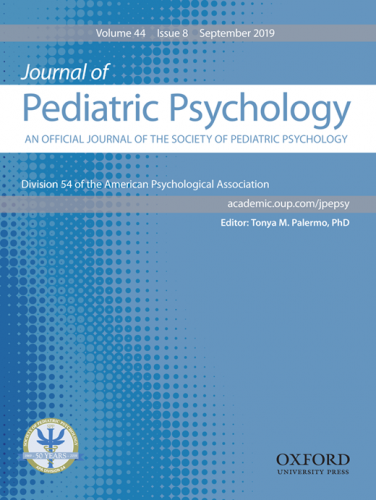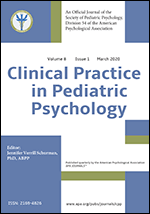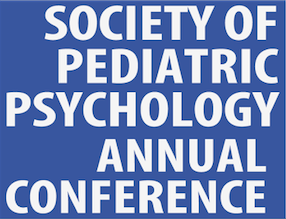Fact Sheet: Integrated Primary Care
The American Psychological Association (APA) has identified the integration of psychologists into primary care as an important method to increase access to mental and behavioral healthcare. Integrated pediatric primary care psychologists can help identify and address mental and behavioral health conditions presenting in childhood and adolescence and implement preventative programming within the primary care setting.
Prevalence and Course (of mental health conditions in childhood)
Behavioral health concerns are among the top 5 reasons for pediatric primary care visits in the U.S., and approximately 20% of children in the U.S. experience a mental health need. Many adult behavioral health conditions initially present in childhood and adolescence, making early identification and treatment important. Mental health problems in childhood have significant educational, occupational, and social consequences in adulthood (Slomski, 2012).
Evidence-based Assessment
Integrated primary care models utilize universal screening for social, emotional, and behavioral development as part of well child checks to identify children and adolescents in need of mental health services. Broadband screening instruments, such as the Pediatric Symptoms Checklist, the Strengths and Difficulties Questionnaire, and the Patient Health Questionnaire have been successfully utilized (Wissow et al., 2013) as well as focused measures such as the Adverse Childhood Experiences questionnaire (ACEs). Integrated pediatric psychologists may conduct comprehensive clinical interviews to provide initial diagnosis, psychoeducation, brief intervention and care planning, and supported referrals to community partners. Pediatric psychologists maintain a focus on normal development throughout consultation, facilitating provision of anticipatory guidance regarding normal behavioral and socio-emotional changes throughout the pediatric lifespan.
Culture, Diversity, Demographic and Developmental Factors
Higher socioeconomic status predicts use of specialty mental health services (Amone-P’Olak et al., 2010). Integration of pediatric psychologists into pediatric primary care settings may help address this wealth-to-use gap. Cultural barriers to accessing specialty mental health services may be reduced in integrated primary care (e.g., following up on a referral provided by a pediatrician to an outpatient mental health clinic).
Evidence-based Interventions
The evidence base for intervention within primary care is emerging, indicating improved behavioral health outcomes for youth who receive integrated behavioral care versus usual care. Pediatric patient center medical homes (PCMHs) are well positioned to provide family-focused behavioral health preventative interventions.
Resources
- American Psychological Association Center for Psychology and Health
- Kazak, A. E., Hiroto, K., Kaslow, N. J. (Eds.). (2017). Patient-Centered Medical Homes: The Role and Value of Psychology [Special issue]. American Psychologist 72(1).
- SAMHSA-HRSA Center for Integrated Health Solutions (CIHS)
Authors: Maria Lauer, Ph.D., Donna Marschall, Ph.D.
Date of last update: June 2019
References
- Amone-P'Olak, D., Ormel, J., Oldehinkel, A. J., Reijneveld, S. A., Verhulst, F. C., & Burger, J. (2010). Socioeconomic position predicts specialty mental health service use independent of clinical severity: The TRAILS Study. Journal of the American Academy of Child and Adolescent Psychiatry, 49, 647-655.
- Asarnow, J. R., Rozenman, M., Wiblin, J., & Zeltzer, L. (2015). Integrated medical-behavioral care compared with usual primary care for child and adolescent behavioral health: a meta-analysis. JAMA Pediatrics, 169(10), 929-937.
- Halfon, N., Houtrow, A., Larson, K., & Newacheck, P. W. (2012). The changing landscape of disability in childhood. The Future of Children, 13-42.
- Kessler, R. C., Berglund, P., Demler, O., Jin, R., Merikangas, K. R., & Walters, E. E. (2005). Lifetime prevalence and age-of-onset distributions of DSM-IV disorders in the National Comorbidity Survey Replication. Archives of General Psychiatry, 62(6), 593-602.
- Leslie, Laurel K., Christopher J. Mehus, J. David Hawkins, Thomas Boat, Mary Ann McCabe, Shari Barkin, Ellen C. Perrin et al. "Primary health care: potential home for family-focused preventive interventions." American Journal of Preventive Medicine 51, no. 4 (2016): S106-S118.
- Purewal, S. K., Bucci, M., Gutiérrez Wang, L., Koita, K., Silvério Marques, S., Oh, D., & Burke Harris, N. (2016). Screening for adverse childhood experiences (ACEs) in an integrated pediatric care model. Zero to Three, 37(1), 10-17.
- Oppenheim, J., Stewart, W., Zoubak, E., Donato, I., Huang, L., & Hudock, W. (2016). Launching forward: The integration of behavioral health in primary care as a key strategy for promoting young child wellness. American Journal of Orthopsychiatry, 86(2), 124.
- Slomski, A. (2012). Chronic mental health issues in children now loom larger than physical problems. JAMA, 308(3), 223-225.
- Wissow, L. S., Brown, J., Fothergill, K. E., Gadomski, A., Hacker, K., Salmon, P., & Zelkowitz, R. (2013). Universal mental health screening in pediatric primary care: a systematic review. Journal of the American Academy of Child & Adolescent Psychiatry, 52(11), 1134-1147.



